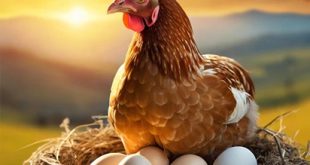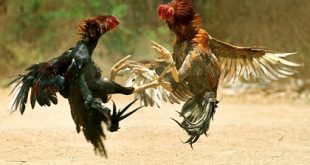Sheep are fascinating creatures, with anatomy perfectly adapted to their environments and lifestyles. As one of the earliest domesticated animals, sheep have been companions to humans for thousands of years, providing wool, meat, and milk. To truly appreciate these animals, it is helpful to understand their body parts and the functions each serves. In this article, we will explore the major body parts of a sheep and how each contributes to its survival and productivity.
A Body Part of A Sheep

1. Head
The head of a sheep is a critical part of its anatomy, housing several key organs and features:
- Eyes: Sheep have wide-set eyes on the sides of their heads, giving them a panoramic field of vision. This placement allows them to detect predators from almost every angle, a vital survival adaptation for a prey species. However, their depth perception is limited due to the placement of their eyes.
- Ears: Sheep ears are highly mobile and play an important role in detecting sounds. Their keen sense of hearing helps them identify approaching predators or locate other sheep in their flock. Additionally, ear movements can indicate mood or alertness.
- Nose and Mouth: The nose of a sheep is not only for breathing but also for an excellent sense of smell, which helps in identifying food, recognizing lambs, or sensing danger. The mouth contains a dental pad on the upper jaw and incisors on the lower jaw, which are perfectly designed for grazing. This structure allows sheep to efficiently clip grasses close to the ground.
2. Neck
The neck of a sheep connects its head to the rest of its body and provides flexibility and mobility for grazing. A strong and mobile neck allows the animal to reach grass on the ground without moving its entire body. It also helps sheep communicate body language, such as raising their heads when alarmed.
3. Torso
The torso is the main body of the sheep and houses essential internal organs:
- Heart and Lungs: Located in the chest cavity, the heart pumps oxygenated blood throughout the body, while the lungs facilitate the exchange of oxygen and carbon dioxide. These organs work together to support the sheep’s physical activity, from walking to running.
- Digestive System: Sheep are ruminants, meaning they have a specialized four-chambered stomach—the rumen, reticulum, omasum, and abomasum—designed to break down fibrous plant material. The rumen ferments food with the help of microbes, allowing sheep to extract nutrients from grasses and other roughage. The digested material is regurgitated as cud, chewed again, and swallowed for further digestion.
- Reproductive Organs: Ewes (female sheep) have a uterus designed for carrying and delivering lambs, while rams (male sheep) have reproductive organs specialized for breeding. The reproductive system is vital for the continuation of the species and the success of sheep farming.
4. Legs
Sheep have four sturdy legs that are essential for movement, grazing, and escape from predators:
- Hooves: Sheep hooves are hard and cloven, providing a firm grip on various terrains, including rocky hills and soft grasslands. Healthy hooves are essential for mobility and comfort. Regular trimming and care are necessary to prevent issues like foot rot.
- Joints: Sheep’s legs are equipped with flexible joints, allowing them to move efficiently and climb steep slopes. This adaptability is especially important for breeds that live in mountainous areas.
5. Skin and Wool
One of the most remarkable features of sheep is their skin and wool:
- Skin: The skin acts as a protective barrier, shielding the sheep from environmental factors like UV radiation, parasites, and pathogens.
- Wool: Sheep are most famous for their wool, which grows continuously and serves as insulation against both cold and heat. Wool fibers trap air, creating a layer of warmth in winter, while also wicking moisture away to keep the sheep cool in summer. For humans, wool is a valuable material used in textiles, and its quality varies depending on the breed.
6. Tail
The tail of a sheep is more than just an appendage. In lambs, the tail helps with balance as they learn to walk and run. For adult sheep, the tail’s primary function is to protect the anal and genital regions. In many domesticated breeds, tails are docked to reduce the risk of flystrike, a condition where flies lay eggs in soiled wool, leading to maggot infestation.
7. Ears and Sense Organs
In addition to hearing, the ears, eyes, and nose of a sheep provide a strong sensory network:
- Taste and Smell: Sheep rely on their keen sense of taste and smell to choose nutritious plants and avoid toxic ones. They can distinguish subtle differences in vegetation, which aids in selecting the best forage available.
- Touch: Sheep have sensitive skin, especially around the nose and face. This sensitivity helps them navigate their environment and interact with other sheep.
8. Brain and Nervous System
The brain of a sheep governs all its bodily functions and behaviors. Sheep are social animals with strong flocking instincts, and their brains process complex social interactions. The nervous system coordinates movement, sensory input, and responses to stimuli, ensuring the animal can adapt to its surroundings.
9. Teeth and Dental Structure
Sheep have a unique dental structure suited for grazing:
- Incisors: Found only on the lower jaw, incisors help sheep clip grass close to the ground.
- Dental Pad: The upper jaw features a tough dental pad instead of teeth, which works with the incisors to grasp and cut plants.
- Molars: Located at the back of the mouth, molars grind food into smaller particles, aiding in digestion.
As sheep age, their teeth wear down, affecting their ability to graze. Farmers often monitor dental health to determine a sheep’s productivity and longevity.
10. Udder
In ewes, the udder is a specialized mammary gland that produces milk for feeding lambs. A healthy udder is crucial for lamb survival, as colostrum (the first milk) provides essential antibodies to boost immunity. Proper udder health also affects the quality of milk and prevents infections like mastitis.
Conclusion
The anatomy of a sheep is a marvel of natural adaptation, with each body part playing a specific and vital role in the animal’s life. From the panoramic vision of their eyes to the efficient digestion of their four-chambered stomachs, every feature is designed for survival and productivity. Understanding these functions not only helps in appreciating these animals but also highlights the importance of proper care in sheep farming. By maintaining their health and well-being, we ensure that sheep continue to thrive and contribute to human livelihoods.


